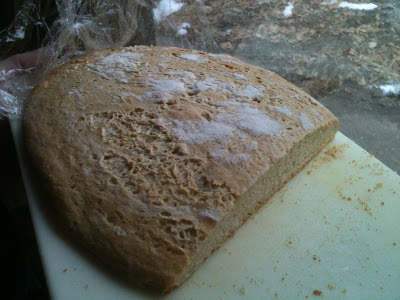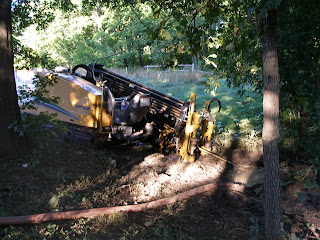Recycle, Cycle, Integrate
Restore. Restoration. A Restorative Culture, These are common terms in Permaculture especially with soil and water. Many plants are used to restore soil health and ecological function.
One comment I have on recycling.
The word recycle is a marketing convention for environmental awareness. It is good and although most recyclables still end up in the dump, everyone understands the importance or at least the concept. But...you cannot recycle... only cycle. Nature does not recycle, it cycles energy, waste (which is food), water, minerals, carbon, you name it. Recycling really means passing off materials to another entity who you believe is going to reprocess the materials into something else. Recycling results in externalizing our waste and the environmental cost. Reference: "The story of stuff" by Annie Leonard.
Try this progression.
Recycling - The act of putting stuff in a bin that someone else will deal with other than dumping it. Except when the materials are contaminated, mixed or the bulk price for sellers is too low for economic benefit.
Cycling - The systemic and incorporated transfer of all waste within a system so that no organic or inorganic material becomes unavailable for future use as food, fodder, fiber, or a second life. The consumer and producer are responsible for all material "waste" to its final reuse. Nature cycles, hence waste=food. In the natural world all things are food for something else as the carbon and organic matter is constantly being consumed by organisms and traded by species. The food chain is a cycle that constantly adapts to ever changing levels of material, living or dead, that is available. We civilized humans are very bad at this generally, but many indigenous people have sustained themselves for generations understanding the importance and sacredness of all life and their role in maintaining the balance or better yet, being part of the balance of life.
In Permaculture we seek an integrated design where all inputs and outputs are accounted for. When we implement our designs there should be no net loss in material or energy. In Europe an Ice Cream producer infused native plant seeds in the cartons and encouraged consumers to throw them out the car window or into vacant lots. The carton decomposed quickly and was instant mulch for the plants that grew. In college I made seed paper for stationary and encouraged my recipients to tear up my correspondence and toss it outside. These examples give the design a second life as a vehicle for restoring depleted native species in urban and rural areas. In time each item would produce enough plant material to balance the material used in the initial design. Perhaps even carbon would be sequestered to offset the designs contribution to pollution.
Integrating our lives with the sources of our materials, food and energy and then with the final destination of these excess materials after we are done with them makes us part of the cycle. If we are not part of the cycle, we are wasting huge amounts of energy and opportunity. If we are the terminus, we are the dump, disrupting natural cycles, causing natural corrections.
One comment I have on recycling.
The word recycle is a marketing convention for environmental awareness. It is good and although most recyclables still end up in the dump, everyone understands the importance or at least the concept. But...you cannot recycle... only cycle. Nature does not recycle, it cycles energy, waste (which is food), water, minerals, carbon, you name it. Recycling really means passing off materials to another entity who you believe is going to reprocess the materials into something else. Recycling results in externalizing our waste and the environmental cost. Reference: "The story of stuff" by Annie Leonard.
Try this progression.
Recycling - The act of putting stuff in a bin that someone else will deal with other than dumping it. Except when the materials are contaminated, mixed or the bulk price for sellers is too low for economic benefit.
Cycling - The systemic and incorporated transfer of all waste within a system so that no organic or inorganic material becomes unavailable for future use as food, fodder, fiber, or a second life. The consumer and producer are responsible for all material "waste" to its final reuse. Nature cycles, hence waste=food. In the natural world all things are food for something else as the carbon and organic matter is constantly being consumed by organisms and traded by species. The food chain is a cycle that constantly adapts to ever changing levels of material, living or dead, that is available. We civilized humans are very bad at this generally, but many indigenous people have sustained themselves for generations understanding the importance and sacredness of all life and their role in maintaining the balance or better yet, being part of the balance of life.
In Permaculture we seek an integrated design where all inputs and outputs are accounted for. When we implement our designs there should be no net loss in material or energy. In Europe an Ice Cream producer infused native plant seeds in the cartons and encouraged consumers to throw them out the car window or into vacant lots. The carton decomposed quickly and was instant mulch for the plants that grew. In college I made seed paper for stationary and encouraged my recipients to tear up my correspondence and toss it outside. These examples give the design a second life as a vehicle for restoring depleted native species in urban and rural areas. In time each item would produce enough plant material to balance the material used in the initial design. Perhaps even carbon would be sequestered to offset the designs contribution to pollution.
Integrating our lives with the sources of our materials, food and energy and then with the final destination of these excess materials after we are done with them makes us part of the cycle. If we are not part of the cycle, we are wasting huge amounts of energy and opportunity. If we are the terminus, we are the dump, disrupting natural cycles, causing natural corrections.


Comments